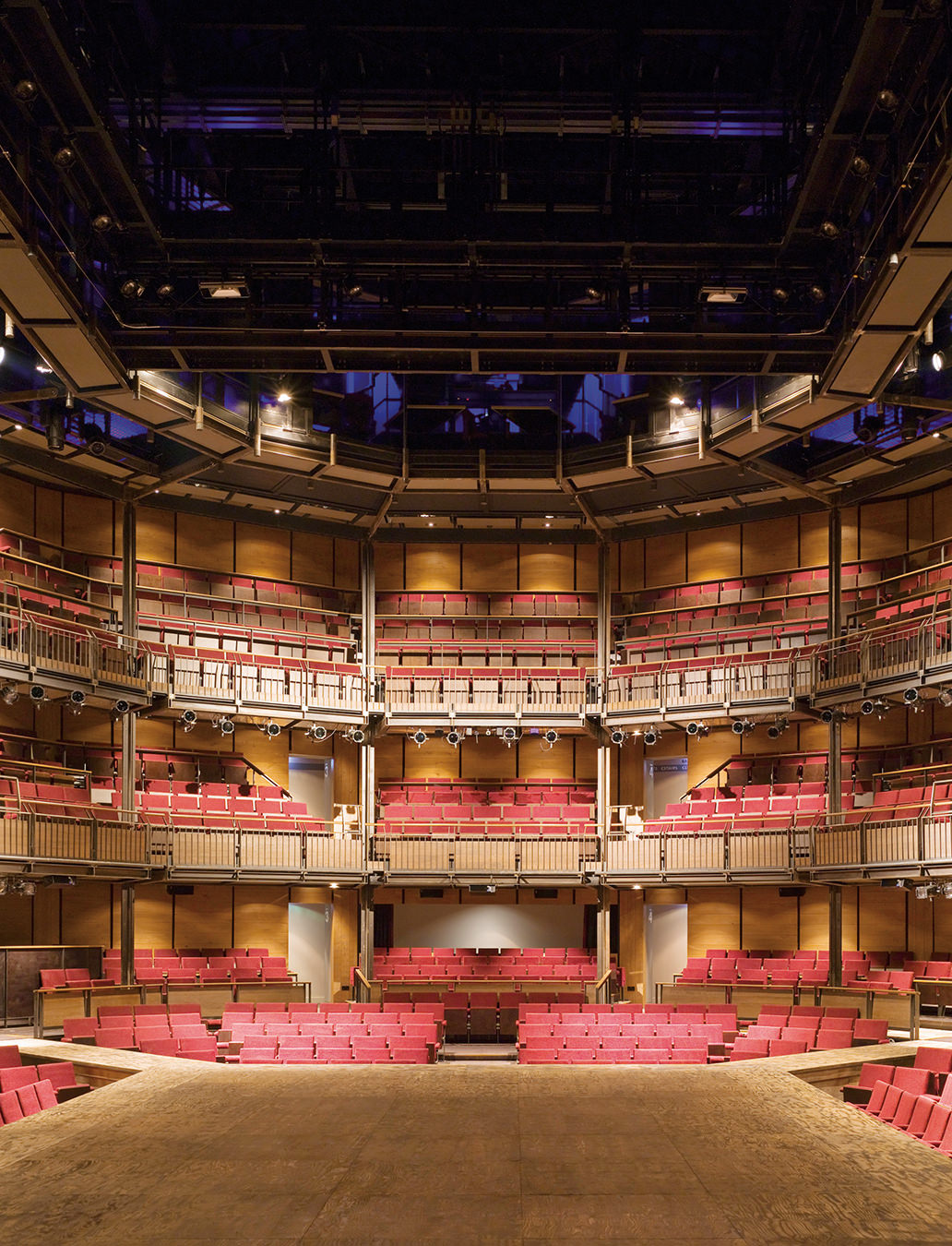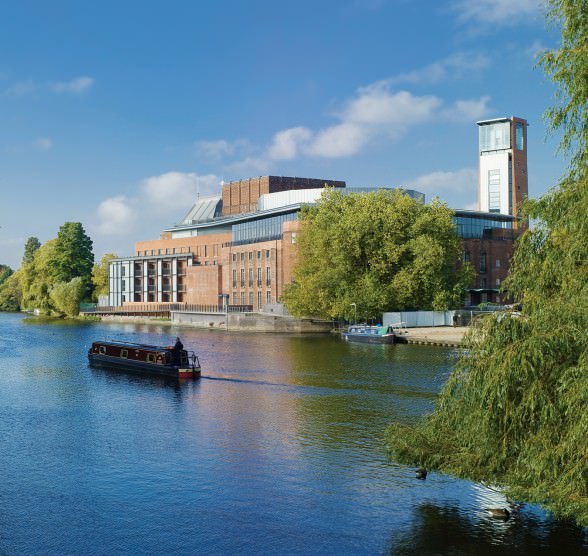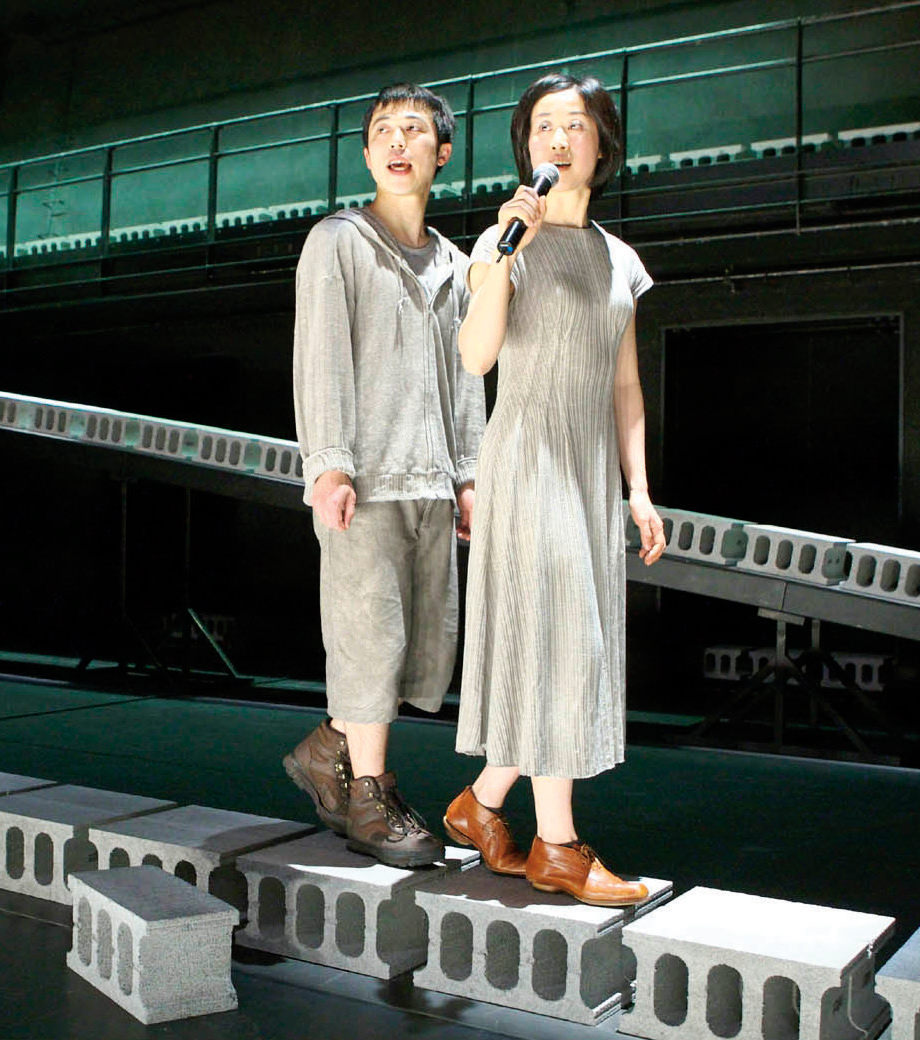The Royal Shakespeare Theatre
Royally refurbished.

The new Royal Shakespeare Theatre’s thrust stage; the theatre sits on the banks of the River Avon.
“All the world’s a stage, and all the men and women merely players.”
The famous line from William Shakespeare’s comedy As You Like It will take on fresh meaning when it is performed in the Royal Shake-speare Company’s (RSC) new, £112.8-million ($176-million Canadian) home in Stratford-upon-Avon, England, where the Bard was born, baptized, and buried. The centrepiece of the company’s splendid new complex is an intimate theatre with a thrust stage that is generating critical raves and transforming the audience experience.
Considered by many to be the world’s pre-eminent producer of Shakespeare’s works, the RSC began planning the transformation of its Stratford-upon-Avon home in 1996. The organization first intended to tear down its cinema-style art deco Royal Shakespeare Theatre, which was designed by architect Elisabeth Scott in 1932; instead, the RSC opted to incorporate existing parts of it into a new theatre. On a recent tour of the complex, a guide explained that the RSC has “scooped the old theatre out and built a new one in the surrounds of the old.”
The new Royal Shakespeare Theatre retains most of the 1932 theatre’s brick façade on the River Avon; the original teak stage—where acclaimed thespians Laurence Olivier, Ralph Richardson, and John Gielgud once trod—is now lobby flooring; gorgeous marquetry doors depicting tools of tradesmen who helped build the 1932 theatre are still in use in one of the bars; and, most whimsically, while the old theatre’s metal box office may sit in its original location, the old lobby is now a new bar. To create more space for thirsty patrons between acts, the art deco box office is now installed on special tracks with a mechanism that can lift it above the heads of the crowd.
Scott’s theatre had 1,400 seats in a fan-shaped configuration, and a proscenium stage; one actor is said to have claimed that addressing the audience from this stage was like “addressing Calais from the white cliffs of Dover.” The new auditorium has 1,040 seats, and was designed by London-based architects Bennetts Associates, with input from theatre consultants Charcoalblue. Thanks to the thrust stage, actors are now surrounded by the audience on three sides, and only 15 metres separate the farthest seats from the stage, compared to 27 metres in Scott’s theatre. This creates an up-close theatregoing experience similar to that offered during Shakespeare’s time.

The theatre sits on the banks of the River Avon.
“We wanted to move away from the 19th-century proscenium ‘picture frame’ to a theatre which celebrates interaction,” says Michael Boyd, RSC artistic director. “Our transformed Royal Shakespeare Theatre auditorium offers the promise of a changed relationship between actor and audience.”
Boyd says that when the RSC’s first artistic director, Peter Hall, founded the company in 1961, “he made a commitment to collaborative, contemporary theatremaking. The company has helped shape British theatre ever since, and that commitment remains at the heart of what we do today.”
Besides the new auditorium, the refurbished theatre complex has four bars, a riverside café, and a rooftop restaurant that overlooks the River Avon and neighbouring gardens. There is also a brand-new tower, with a platform that provides wraparound views of Stratford-upon-Avon, and, on a clear day, Warwickshire and three nearby counties. An elevator takes visitors up the 32-metre structure, while the descent is by way of a stairwell that features an exhibition of historical artifacts displayed upon the walls and within its alcoves.
The opening of the new complex coincides with the RSC’s 50th birthday season, which began in mid-April and runs through November. It will feature new productions of Macbeth, The Merchant of Venice, and A Midsummer Night’s Dream, all performed in the Royal Shakespeare Theatre.
Photos by Peter Cook, courtesy of the Royal Shakespeare Company.



